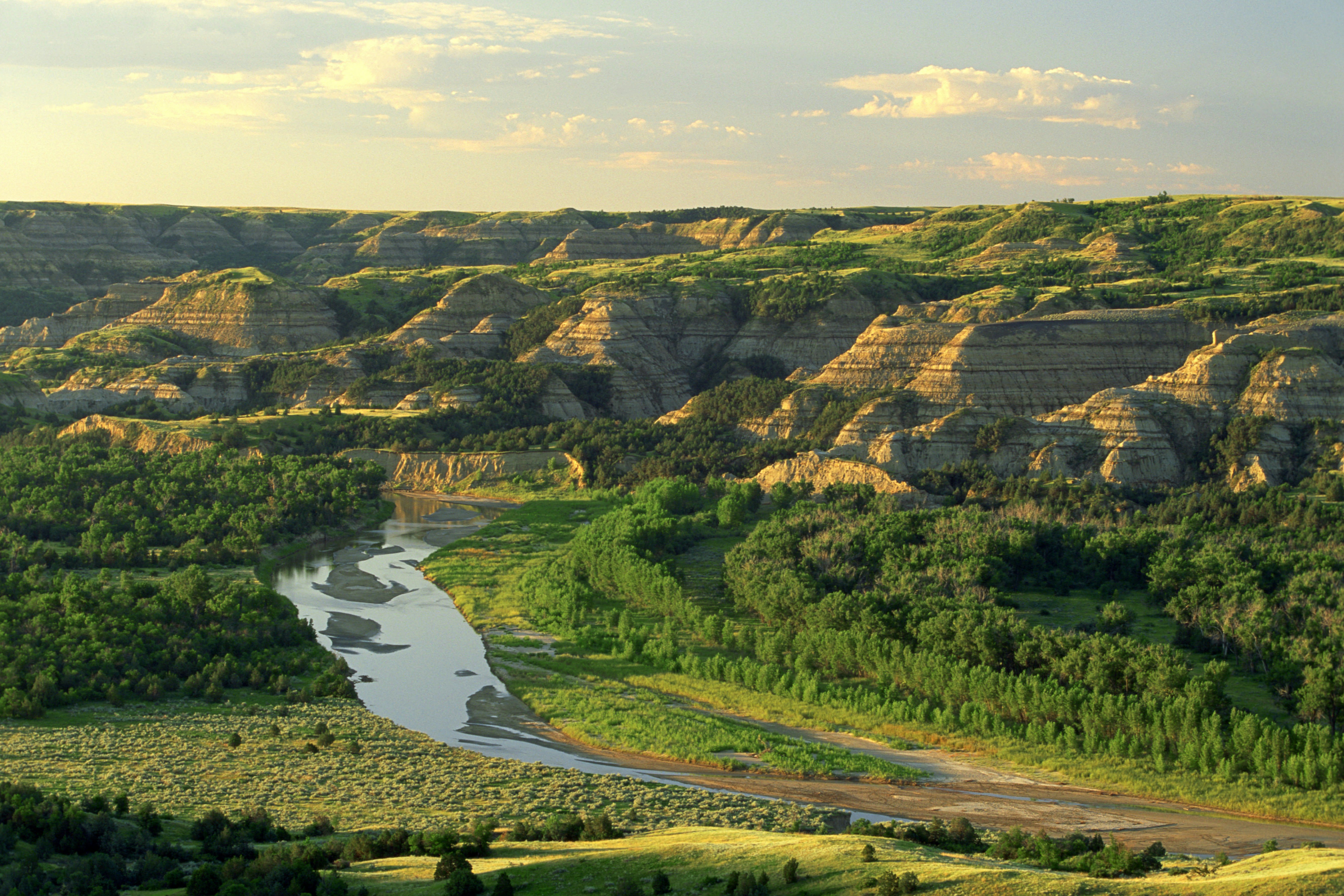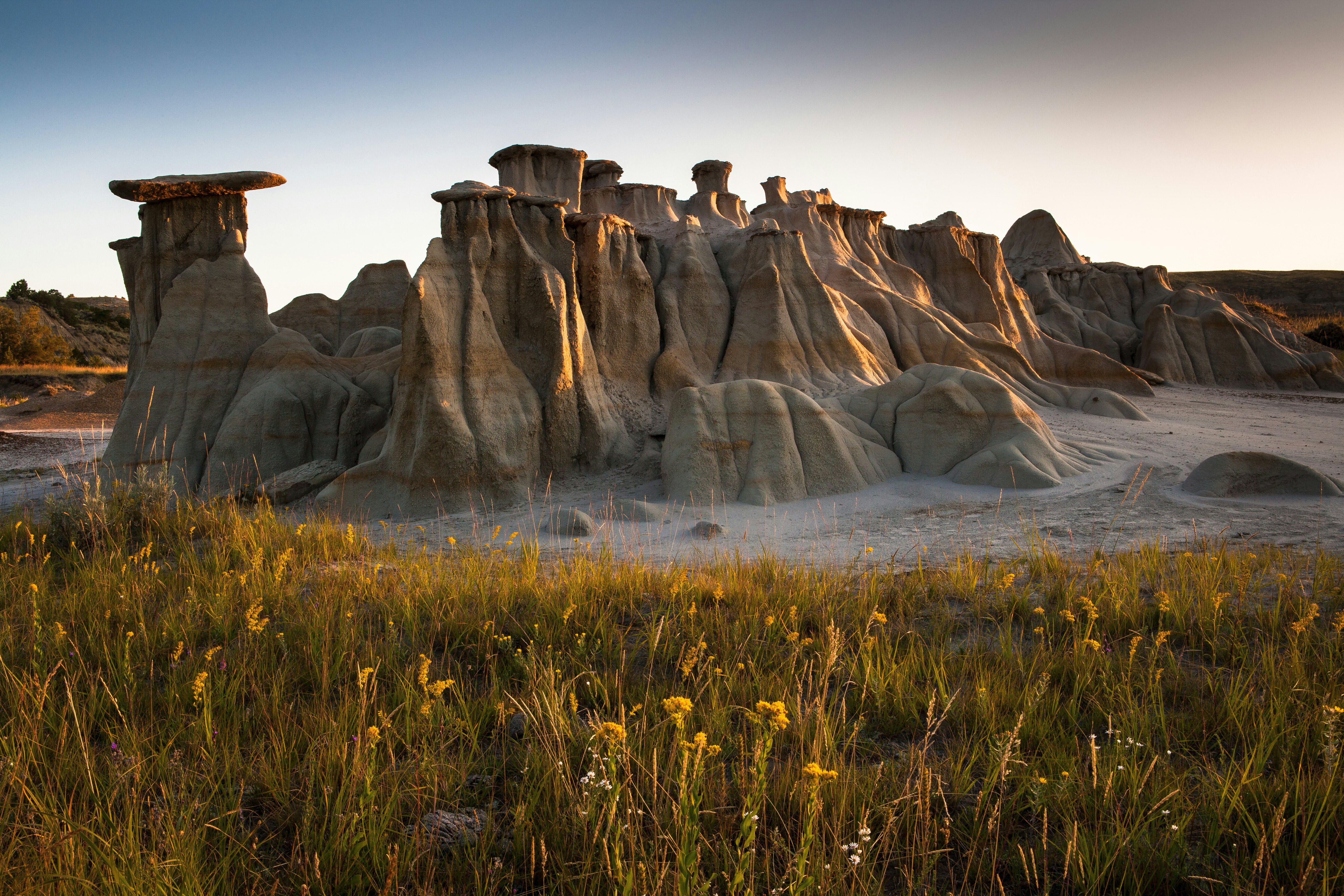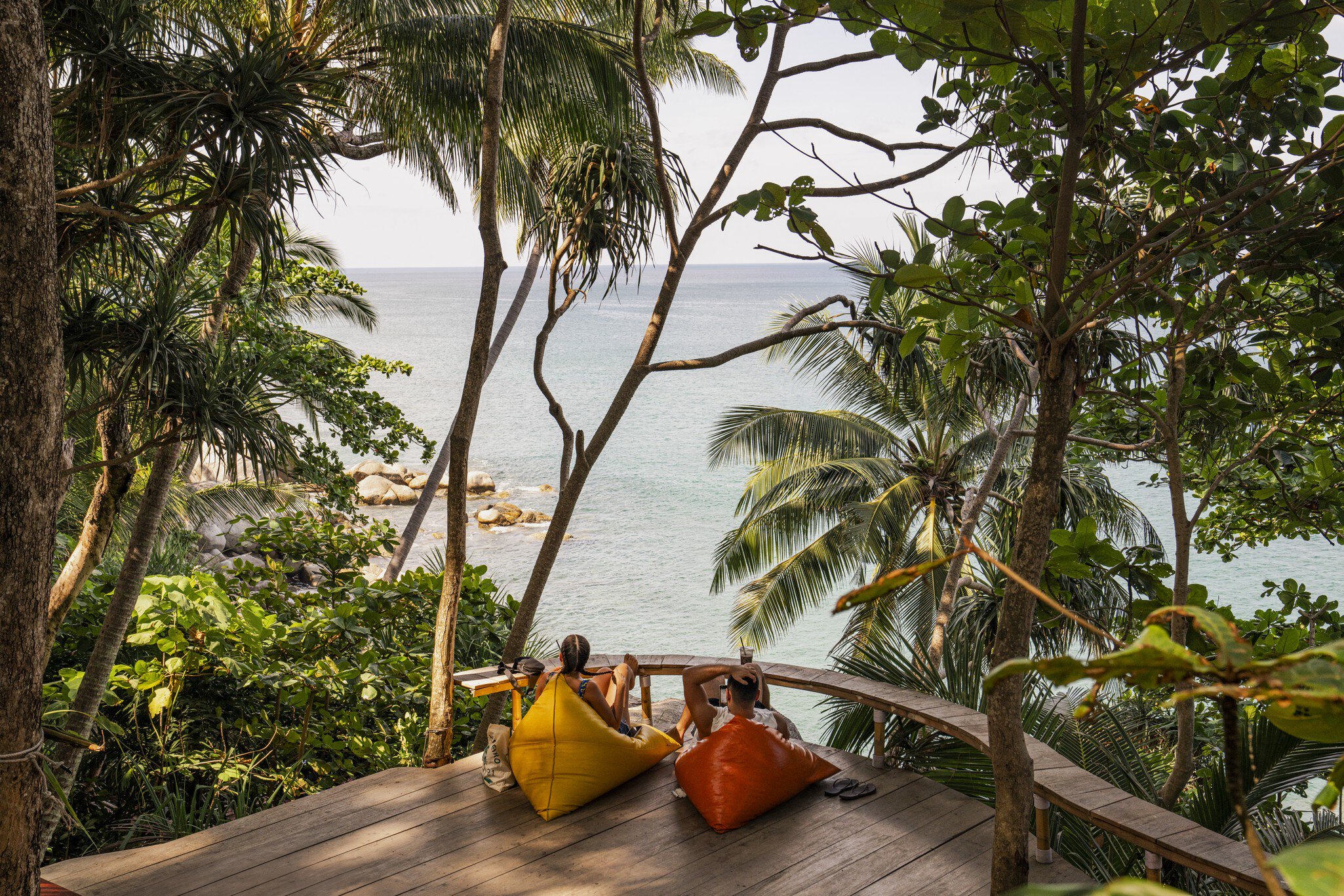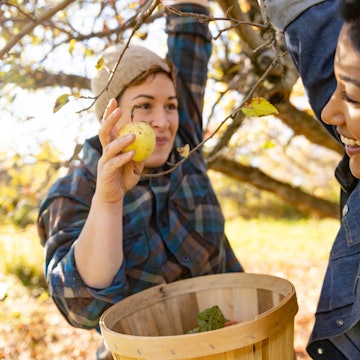

Wild horses grazing in Theodore Roosevelt National Park in North Dakota. Zack Frank/Shutterstock
Roaming bison, prairie-dog metropolises, painted canyons, bizarre rock formations – all sights that enraptured a young Theodore Roosevelt. Before he became the 26th US President in 1901, Roosevelt spent years living in this southwest corner of North Dakota, escaping his native New York for the serenity of America’s windswept Badlands.
Today, Theodore Roosevelt National Park visitors can experience the same natural grandeur, and sense his legacy at every turn. At the park’s South Unit outside the small cowboy town of Medora, the exhibits some of TR’s history and personal possessions, including his preserved . It serves as the gateway to the park’s mesmerizing overlooks, trails and wildlife valleys. Nearby, the under-construction commemorates the man and the land he loved with immersive galleries and panoramic nature paths that will be completed in 2026.
An hour away is the North Unit, open for rustic camping and recreation, plus puzzling geology like the cannonball concretions formed like giant stone pearls. Devote another hour’s drive to reach the , home to what’s left of TR’s humble 1880s ranch in a grassy, peaceful bend between foothills and the Little Missouri River. Here, and across the park’s entire 70,000 acres, you can enjoy natural splendor unique to these northern Great Plains.
When should I go to TRNP?
TRNP is open 24 hours a day all year long, with plenty of scenery and recreation. Wildlife viewing changes with the season and time of day, and most visits will bring sightings of bison, deer, coyotes, porcupines, prairie dogs, snakes, eagles and occasional wild horses or bobcats.
Summer is the ideal time to enjoy the park’s trails, camping, river float trips, and other activities, with hot days reaching over 90°F (32.2°C), and nights cooling considerably thanks to the windy, arid landscape. Conditions in spring and fall especially can change quickly. Storms are infrequent but can blow in sudden lightning and heavy precipitation.
Winter is a different story, with temperatures averaging single-digit lows. From around December through February, expect biting winds and around 30 inches of snow annually. On the bright side, that snowpack brings great cross-country skiing and snowshoeing conditions. Just beware of snow and ice on highways, and weather-related road closures from November through April.
Far from any city lights, TRNP is prime territory for dark-sky viewing. Northern Lights are best viewed from late August into April, while summer nights open views to the Milky Way and meteor showers. Before your visit, see if any ranger dark-sky tours or night walks are on the calendar. Or plan your trip around the park’s annual late-summer , with volunteers sharing their mighty telescopes for peeks and explanations of visible planets and constellations.

How much time should I spend in TRNP?
Because TRNP is relatively far from any major city, time spent here is a chance to make the most of unplugging and soaking up boundless natural beauty. Travelers can spend several days exploring a new trail or activity each day, just consider the different drive times if you want to see more of the park beyond the South Unit.
The North Unit is an hour’s drive one-way to Watford City, but is worth the time if you’re interested in different landscapes, wildlife and campsites. Teddy Roosevelt fans shouldn’t miss the hour-long, dusty gravel-road drive to his Elkhorn Ranch site; only the boulder foundations of his house remain, but the oasis-like spot echoes with his spirit.
The Theodore Roosevelt Presidential Library, due to open in July 2026, is another essential attraction in Medora. Designed as a “living building,” the structure features an earthen roof sloped into the hill where visitors can ascend to view the surrounding Badlands. Exhibits inside educate, while giant windows and a covered porch showcase the site’s 90 rolling acres.
The library also draws guests outdoors to enjoy a stroll along a mile-long boardwalk loop, with stops along the way like the “grassland pause” seating area, a shade canopy and scenic overlooks. The loop ties into several longer paths as well as to the 144-mile-long, rugged biking, hiking, and horseback-riding . The name comes from the native Mandan-Hidatsa nation and translates to English as "an area that will be around a long time."

Is it easy to get to and around TRNP?
The park is home to three visitor centers and three “units” of different park areas, all within about an hour of each other. The South Unit in Medora is the main hub.
North Dakota’s capital city of Bismarck is the best starting point for most TRNP visitors to fly into, followed by a two-hour drive to Medora (the South Unit) via I-94. The small Dickinson Theodore Roosevelt Regional Airport is a closer option about 50 minutes away.
Either way, the westward drive reaches the park’s Painted Canyon Visitor Center as a first stop to gather maps and information, and enjoy brilliant valley views from its scenic hilltop and hiking trail. Soon after you’ll reach Medora, the small town built on cowboy culture, where the South Unit Visitor Center awaits with more park info and Teddy Roosevelt exhibits.
The is about an hour away via US-85. Located amid the Dakota Prairie Grasslands in Watford City, you’ll find a few more traveler amenities, and the park’s 28-mile roundtrip scenic drive with stunning overlooks, bison herds and other wildlife, primitive campsites and backcountry trails.
Teddy Roosevelt’s Elkhorn Ranch Unit is farther afield and involves an hour-long drive from any direction, much of it on a gravel road – though it’s still easier to reach than the five-hour horseback ride TR would take from Medora.

Top things to do in TRNP
This park is a chance to live like Theodore Roosevelt did, in quiet contemplation while observing pristine nature and wildlife. There are outdoor activities like horseback riding, fishing, canoeing and winter cross-country skiing available, but trails and scenic drives are the main attractions.
The South Unit Visitors Center and the Theodore Roosevelt Presidential Library are the best places to learn about the park’s namesake and his time exploring the Badlands. Before he became President Roosevelt, TR first visited in 1883 to learn the terrain, hunt bison and ranch cattle. A year later, in 1884, TR lost his mother and new wife on the very same day (Valentine’s Day) and he returned to live the next two years here. Discovering stories of his life, reading his journal entries, and viewing his humble living quarters inspire new ways to appreciate the region’s natural wonders.

Visit a town of prairie dogs
By the time you leave TRNP, you’ll have a new appreciation for the prairie-dog community. The burrowing black-tailed ground squirrels are common across the Great Plains, building vast networks of underground tunnels – some estimate there are more than 2000 miles of tunnels in this park alone. A prairie-dog metropolis functions like a town, with chambers for winter and for nighttime, nursery areas for their young, and special burrows to listen for predators or protect the colony from flooding. The park has prairie-dog viewing areas along the South Unit’s scenic drive and the North Unit’s Buckthorn Trail, where you can check out the dogs bopping from mound to mound, sometimes barking, and always keeping a cautious eye on spellbound humans.

Rocks that mystify
The park is a geologist’s wonderland, with colorful layered landscapes, petrified forests, and sculpturesque rocks that began forming 65 million years ago. It is wild to imagine the glaciers that once covered this land and the dinosaurs that roamed across it. Wilder still to explore trails dotted with ancient artifacts like freshwater fossils, petrified wood, tall thin rock spires called hoodoos, and giant sandstone cannonballs.
My favorite thing to do in TRNP
This park is boundless. Views across the plains are as unending as the skies above. I get how Teddy Roosevelt, a man of ceaseless vigor, could downshift for peace and quiet contemplation here. So I trek along the park’s abundant trails to connect to the earth, vigorously, then enjoy feeling wiped out and reflective. Later, night skies shimmer with more stars than New Yorkers like TR and I often behold, and sometimes the big prairie moon makes an appearance. It’s worth losing sleep to gaze from a nighttime overlook at where the park’s and the universe’s vastness meet.

How much money do I need for TRNP?
Most visitors lodge in Medora, the small town where you’ll find the South Unit entrance and Visitor Center. A few more hotels serve TRNP visitors at the North Unit outside Watford City. The handful of basic hotels in each town offer reasonable rates that peak during summer, but they fill up, so be sure to reserve well in advance.
Camping inside the park comes with modest fees and reservations are first-come, first-served. Like other national parks, cash and credit cards are accepted; digital payments may not always be accepted and ATMs can be tough to find.
Night at a Medora hotel: from 110 (US$110) per night
Campground fees: from US$10 per night
Park pass (valid for 7 days): US$30 per vehicle
Coffee drinks: from US$2
Lunch average: US$15
Dinner for two: from US$45
What to pack
Heading to TRNP in winter? Warm, windproof gear is a no-brainer: pack heavy, water-resistant layers, waterproof shoes, thermal wear, and face coverings. By summer, temperature swings mean you should pack for super hot, dry days, and genuinely chilly nights. Spring and fall are a mix of cold, warm, hot, and sometimes stormy – prepare for a range of weather by packing layers of clothing, wind and rain jackets, sunscreen, hats and sturdy footwear.

Plan with a local












